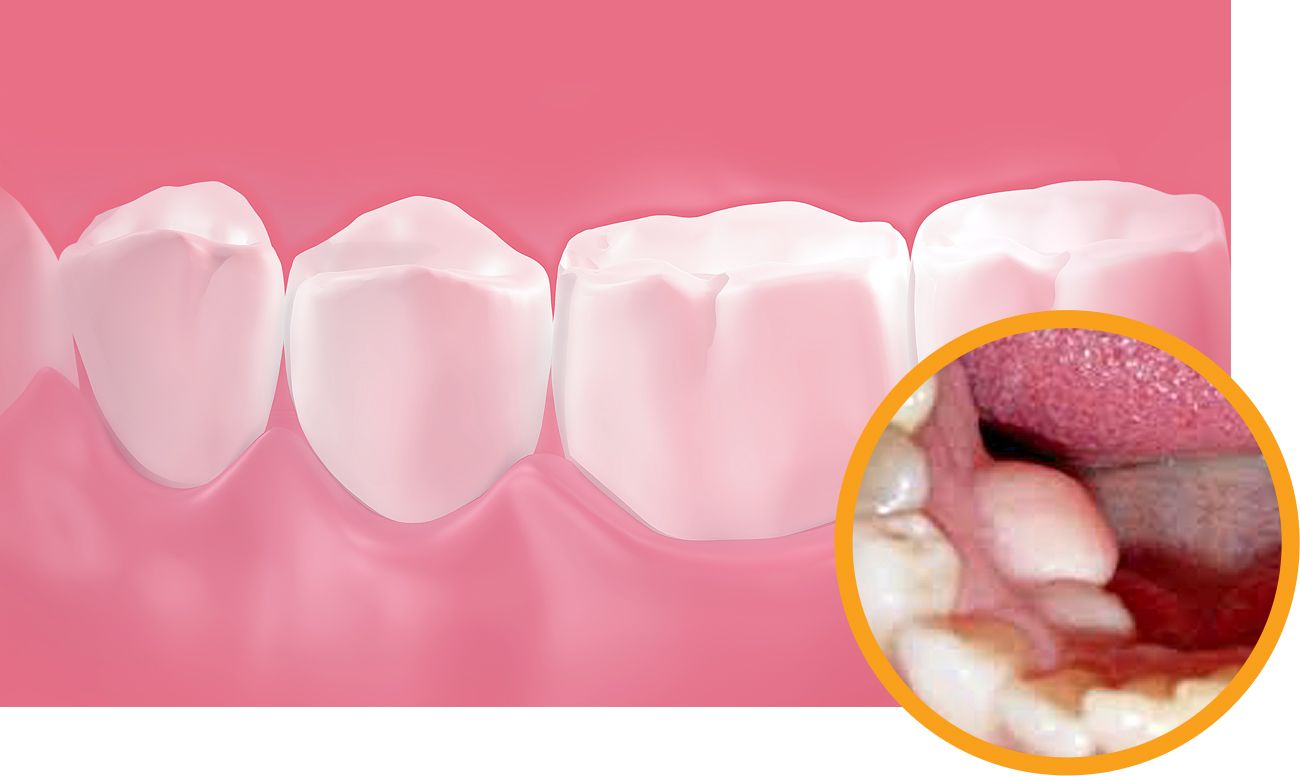Some neoplasms in the mouth appear due to serious diseases, and some may appear completely unexpectedly, for no apparent reason. Even if they are absolutely harmless, you still have to treat or remove them, otherwise you won’t be able to get rid of the discomfort. These anomalies include exostosis.
What is exostosis and why does it occur
Exostosis in dentistry is called outgrowths - the process of growth of bone and cartilage or bone tissues, manifested in the form of protrusions on the surface of the palate or lower jaw. They can be attributed to benign neoplasms, they do not cause any pain.
The main problem is that exostosis is gradually increasing. This leads to increased discomfort, increased pressure on the teeth and bones, and increased risk of injury to the oral mucosa. With such neoplasms, it is impossible to wear prostheses and place implants, and among the possible consequences are malocclusion and displacement of the chin.
At the initial stage, exostosis may not be noticeable, and only a doctor can detect it during a dental examination or on an x-ray. Large growths are easily felt by the tongue.
The reasons why exostosis appears are different:
- congenital jaw anomalies;
- bruises, fractures and other injuries;
- heredity;
- endocrine diseases;
- infectious diseases.
Often, exostosis occurs after tooth extraction with complications. In case of serious damage, the bone tissues shift to the side, grow together incorrectly, and bone development begins.
How to treat?
At home, exostoses on the gums cannot be cured; it will not be possible to do without surgical intervention. The operation must be performed by a dental surgeon. Of course, the procedure has its limitations: contraindications include diabetes mellitus, problems with the endocrine system and adrenal glands, poor blood clotting.
 If the growth on the jaw is very small and does not cause inconvenience, you can take your time with surgical removal. However, someday you will have to do it. Too overgrown exostosis will interfere not only with the tongue, but also with neighboring teeth, which threatens with deformation. And if you need a prosthesis, it is the growths on the jaw that will become the main obstacle to the installation of implants.
If the growth on the jaw is very small and does not cause inconvenience, you can take your time with surgical removal. However, someday you will have to do it. Too overgrown exostosis will interfere not only with the tongue, but also with neighboring teeth, which threatens with deformation. And if you need a prosthesis, it is the growths on the jaw that will become the main obstacle to the installation of implants.
During removal, the specialist will anesthetize the surrounding tissue growths (usually local anesthesia is used) and make a small incision on the gum. The neoplasm is sawn off and smoothed, after which sutures are placed on the jaw mucosa. The process of removing a bone formation on the gum can last several hours, the duration of the procedure will depend on the size of the exostosis and on its location.
The cost of the operation will depend on the chosen dentistry, the volume of exostosis, the number of problem areas and the chosen method of anesthesia.
What to do after surgery
The first days after the operation, you need to carefully monitor the condition of the sutures and do everything so that they do not disperse. Temporarily it is necessary to give up hard and hard food. The healing process will be slowed down by very hot or cold drinks, alcohol and cigarettes. It is recommended to reduce physical activity and avoid stress.
Slight swelling and pain are possible, during the recovery period, painkillers and decongestants can be used. Of course, special attention should be paid to oral hygiene: it is better to consult a dentist about the best means of rinsing the mouth in order to prevent bacterial infection.
If the operation to remove exostosis of the jaw was carried out qualitatively and the patient followed all the recommendations, there should not be any complications. With prolonged pain, fever and swelling that does not subside, you should immediately consult a doctor. In addition, you should not prescribe treatment yourself - this can only worsen the rehabilitation process.





